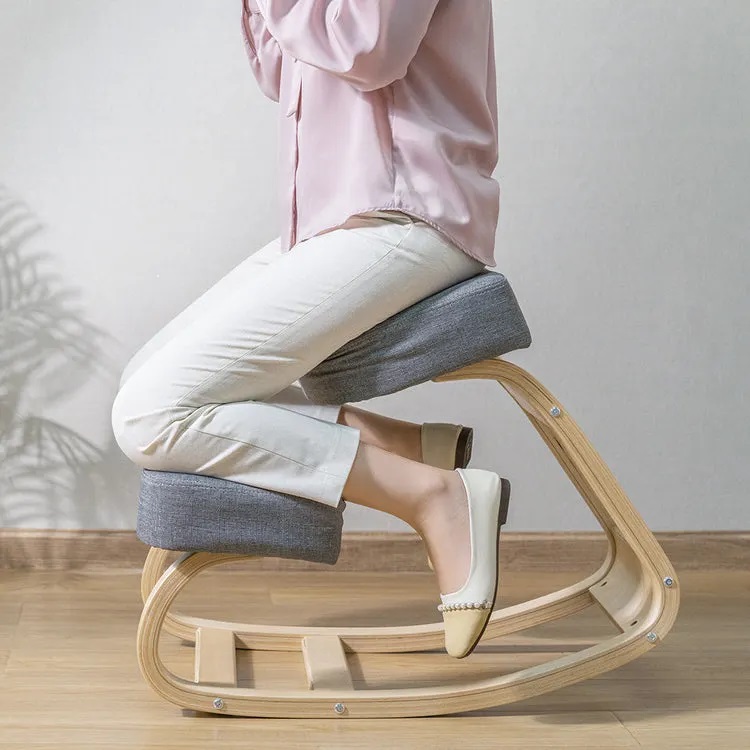What Should You Know Before Using an Ergonomic Kneeling Desk Chair?

Have you recently heard of the term ergonomic kneeling desk chair and wondered what makes it stand out in the world of office furniture? Well, you’re not alone. With a growing awareness of posture, spinal health, and workspace wellness, this uniquely designed chair is catching attention across homes and workplaces alike. Before you make the switch, though, it’s crucial to understand what exactly it offers, how it affects your body, and what adjustments you might need to make. This article will walk you through everything you need to know—without the fluff.
A New Take on Sitting
We’re used to conventional chairs—ones that let us slump, lounge, or sit cross-legged while working or relaxing. But an ergonomic kneeling desk chair flips that habit on its head. Designed to tilt your pelvis forward and open up your hips, this chair aligns your spine naturally. That upright posture isn’t just good-looking; it’s great for your muscles and joints.
But here’s where it gets interesting: this seating posture forces your body to work a little. Your core muscles stay slightly engaged, your back gets less compressed, and your legs aren’t folded at awkward angles. It’s almost like yoga—but at your desk.
The structure typically includes a sloped seat and knee rests, but don’t be fooled—you’re not actually kneeling in the traditional sense. Your shins take some of the pressure, but most of your weight remains on your bottom. The idea is balance and posture support, not discomfort.
The Real-Life Impact
Let’s face it—sitting for eight hours a day isn’t ideal, no matter how plush the chair is. Prolonged sitting has been linked to back pain, poor circulation, and even long-term health risks. What the ergonomic kneeling desk chair offers is an opportunity to counteract some of these effects.
It keeps your body in a more active sitting position. The upright angle prevents your spine from curving and slouching, giving you a more alert and naturally aligned posture. Over time, many users report feeling more energized, less achy, and even more focused.
In comparison, many people are now looking at smart watch women collections not only for fashion but also for activity tracking during sedentary jobs. Much like a smart device encouraging you to move every hour, this chair keeps your posture in check and can make your workday feel more fluid and dynamic.
The Learning Curve
Now here’s a reality check—switching to an ergonomic kneeling desk chair won’t feel natural right away.
Most users go through a short adjustment period. You might feel soreness in your shins or thighs as your muscles adapt. Some even return to a traditional chair before gradually building up to a full day. That’s completely normal.
You should start slow. Try 30 minutes to 1 hour a day, increasing your usage over a couple of weeks. It’s all about retraining your body and engaging muscles that have likely gone underused for years.
This transition is similar to switching from a regular smartwatch to a smart watch women design that tracks menstrual cycles or sleep patterns—it’s a new feature set, and it takes time to understand the benefits.
Is It Suitable for Everyone?
An ergonomic kneeling desk chair isn’t a one-size-fits-all solution. It works best for people with:
- Chronic back pain
- Poor posture from sitting too long
- A flexible or adjustable desk setup
- A willingness to move and stretch during the day
However, it might not be ideal if you have issues with your knees, are very tall, or need to frequently shift between tasks that involve standing and sitting. Also, if your workspace isn’t adjustable (especially the height of your desk), the angle of the kneeling chair could become awkward.
That said, these chairs come in various designs now—from basic wooden frames to fully cushioned, adjustable versions—so with a bit of research, many people find something that fits their lifestyle.
Common Misconceptions
There are several myths floating around regarding kneeling chairs. Let’s clear a few up:
- “It puts too much pressure on your knees.” Actually, your shins—not your knees—bear the load. And only part of it.
- “You can’t sit in it all day.” You shouldn’t sit in any chair all day. Movement and posture variation are key, no matter what.
- “They’re uncomfortable.” Only if you don’t use them correctly or don’t allow yourself an adaptation period.
Much like wearing a new pair of running shoes or adjusting to a smart watch women setup that buzzes every hour to move, comfort grows with familiarity.
How It Affects Productivity
One underrated advantage of the ergonomic kneeling desk chair is the alertness it encourages. Because the chair doesn’t let you lounge or hunch, your body naturally stays more engaged. You might find yourself more focused, especially during deep work or creative tasks.
Sitting upright also improves blood flow, which supports cognitive function. Pair that with a well-lit workspace and maybe a cup of tea, and you’ve got a productivity boost that’s hard to match.
Some professionals even combine their kneeling chair setup with standing desks, alternating between postures. The key takeaway here is balance. Just like health-conscious professionals using a smart watch women collection to monitor their hydration or sleep, good ergonomics is about building healthier routines.
Maintenance and Durability
Another thing you should know before buying is how to care for your chair. Because of the shape and padding, these chairs can wear differently than traditional office seating.
Look for features like:
- Durable cushion foam
- Non-slip knee rests
- Easy-to-clean materials
- Adjustable height and tilt angles
You don’t need a luxury model, but investing in one that supports your size and weight will pay off in comfort and longevity. Read reviews carefully, especially from people who’ve used the chair daily for several months.
As with all health-related tools—whether it’s a smart watch women range or a desk chair—the quality of the product can make a massive difference.
Creating the Right Workspace
To truly get the benefits of a ergonomic kneeling desk chair, you may need to make a few workspace changes. That could mean raising your monitor to eye level, using a split keyboard, or organizing your supplies for less reach and strain.
Lighting, footrests, and even your flooring (rugs, mats, or bare floors) can also impact how well the chair integrates into your routine. Consider creating a workstation that encourages movement, variety, and alignment.
And remember: even the best tools won’t help if you stay sedentary for hours. Take breaks. Stand up. Stretch. Walk around the room. The chair is just part of the equation—your habits matter more.
Real Stories, Real Results
Many people who’ve used a ergonomic kneeling desk chair share one common theme: they didn’t realize how much pain and fatigue their old chair caused until they made the switch.
Writers, coders, teachers, and even artists report improved posture, reduced headaches, and better breathing. Some even claim it’s helped them feel more confident—there’s something powerful about sitting tall and aligned.
These stories echo the same transformation people describe when they first begin using a smart watch women fitness tracker. The benefits go beyond the physical—it’s a mindset shift.
Final Thoughts
Choosing an ergonomic kneeling desk chair is more than a furniture decision—it’s a lifestyle change. You’ll sit differently, work differently, and maybe even think differently.
That said, it’s not a magic fix. You’ll still need to be mindful of your posture, get up regularly, and complement your setup with other ergonomic habits. But if you’re willing to adapt, the rewards can be profound.



